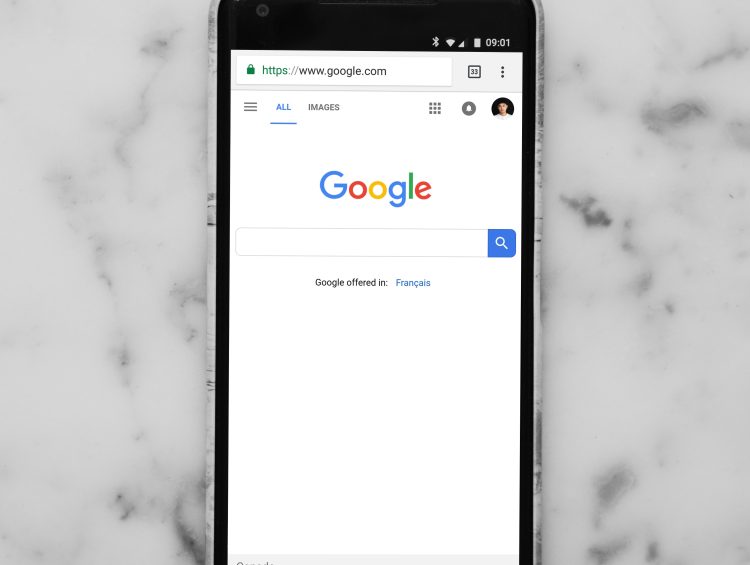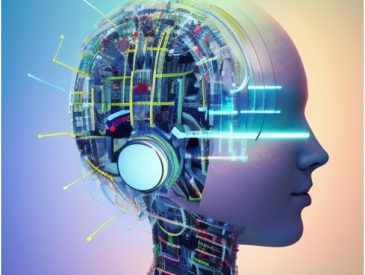On Monday, Google announced a brand-new chatbot tool called “Bard” in an apparent effort to counteract ChatGPT’s success in going viral.
Google Bard is an experimental conversational AI service powered by LaMDA and developed by Google. It is designed to be a rival to ChatGPT, OpenAI’s AI chatbot. It is currently in the testing phase and will be available to the public “in the coming weeks” according to Google.
Bard is designed to be able to understand natural language and respond with answers that are more human-like than traditional search engine results. It can answer questions, provide advice, and even tell jokes. The goal of Bard is to make conversations with computers more natural and engaging for users.
Google has also announced new AI features in Search that will be rolling out soon. These features include improved natural language processing, better understanding of context, and improved accuracy when it comes to providing relevant information for queries.
Overall, Google Bard looks like it could be a great addition to the world of AI chatbots and could help make conversations with computers more natural and engaging for users.
What is Google’s Bard?
Google Bard is an AI system that has been developed by Google as part of their Machine Learning and Artificial Intelligence research initiatives. It is designed to be more human like chatbot than traditional rule based chatbots. Google Bard uses deep learning technologies to generate natural language responses in conversational contexts. The responses that Google Bard generates are based on the user’s questions, requests, and conversations. This allows for a more natural conversation than traditional AI systems.
For example, when you ask Google Bard a question, it will use its built-in knowledge to answer the question in a way that is both accurate and helpful. Additionally, Google Bard can understand context and use that information to generate responses that are more relevant to the conversation at hand. For instance, if you are asking about the weather in your city, Google Bard will know about the local climate and be able to provide accurate predictions for your location.
Google Bard has been used as part of several interactive applications like Google Home and Duplex. With these applications, users can initiate conversations with Google Bard by simply talking to their devices like they would any other person or chatbot. By using this technology, users can get answers to questions or have conversations with Google without having to leave their comfort zone or interact with a human customer service representative directly.
An Introduction to Google Bard’s Products and Features
Google Bard is a powerful AI development tool that has the potential to revolutionize chatbot development. In this section, we will overview Google Bard’s products and features, as well as discuss their uses in chatbot development. We will also provide a brief overview of Ben, the Google Bard bot platform, and discuss its key technical requirements. Finally, we will provide a qualitative comparison of Google Bard with other chatbot development tools and discuss some real life applications of Google Bard. After reading this blog post, you will have a better understanding of how to use Google Bard for your next AI project.
First and foremost, let’s take a look at what Google Bard has to offer chatbot developers. As mentioned earlier, Google Bard offers several powerful products and features for AI development. These include:
- The Ben Platform: This is where all your bot code lives and it provides an easy way for you to create bots without having to learn coding or scripting languages
- The Chat Bot Builder: This is an easy-to-use interface that lets you build complex bots with ease
- The Natural Language Processing (NLP) Library: This library allows you to understand human language better by training on large data sets
- The Translation Services: This lets you easily translate your bots into multiple languages.
These are just a few of the many powerful features that Google Bard has to offer. With these tools at your disposal, it becomes much easier than ever before to build successful chatbots. In fact, many people believe that using Google Bard is the best option when it comes to developing AIchatbots. Why? Let’s take a look…
First of all, using Googlebard makes coding bots much simpler because all the code related to your bot lives within the Ben Platform. There are no separate scripts or programming languages required – everything is handled within Ben itself. This means that there are no messy errors or unexpected malfunctions when trying to deploy your bot onto platforms like Facebook Messenger or Slack. Secondly, using Ben makes it possible for youto quickly create complex bots with lots of user interactions and features. You won’t have spend hours tinkering around trying figure out which parameters work best on which platforms – everything is already built into Ben! Plus, there’s an extensive library of pre-made plugins available that can be easily integrated into your Bots. Thirdly, using natural language processing ( NLP ) capabilities in combination withBen gives your bots supreme intelligence – they can understand human language better than ever before! By.
How Does Google Bard Work?
Google Bard is a powerful conversational AI tool that can be used by developers to create and manage conversations. Google Bard is built on the natural language processing (NLP) capabilities of Google’s machine learning algorithms, which can interpret conversation in a variety of ways. This allows developers to create robust conversations that are capable of understanding a variety of queries and commands.
Google Bard supports a wide range of platforms, including web browsers, mobile apps, and voice assistants. Developers can use Google Bard to interact with users in natural language, provide feedback, or even automate tasks. There are many benefits to using Google Bard for conversational AI. These include the ability to build more intelligent and human-like chatbots, as well as increasing customer engagement rates and satisfaction levels. However, there are also some challenges associated with using Google Bard – such as developing robust enough algorithms to handle complex conversations. If you’re interested in using Google Bard in your project, then we have some advice on how you can get started.
Understanding the Basics of Bard’s Technology
Anyone who has ever used Google knows about its powerhouse of a search engine – and that includes chatbots. Google Bard is one such chatbot, and it’s the creation of Google. It relies on natural language processing (NLP) to generate human-like conversations, which is why it’s so popular with customer service professionals and those who need to interact with customers in a natural way.
Google Bard can be used for a variety of purposes, from customer service to scientific simulations and digital assistants for homes. It also has some pretty nifty features that make it an excellent choice for site searches and visitor conversion rates. For example, Google Bard uses natural language understanding (NLU) to interpret user input and provide context-aware responses. This means that you can depend on its accuracy when you’re trying to get information or help from a chatbot.
In addition to its powerful conversational abilities, Google Bard also leverages AI technologies like sentiment analysis, auto complete, and speech recognition to generate more accurate conversations. Combined, these features make it easy for you to have humanlike conversations with your bots even if you don’t have any prior programming experience! All you need is a basic understanding of coding languages like Python or Java – so even if you’re not tech savvy, you can build your own custom bot in no time at all!
What are the Benefits of Google Bard?
Google Bard is a chatbot designed to help automate customer service. It’s designed to be fast, efficient, and accurate in its responses. Google Bard uses natural language processing to understand user input and intent, meaning that it can respond quickly with detailed automated answers. It can also generate insights from customer conversations to provide deeper data analysis for marketers.
Setting up and using Google Bard is easy, and it has a number of features that make it a valuable tool in the customer service arsenal. For example, it can be integrated with other CRM systems to provide a comprehensive customer support experience. Additionally, Google Bard is designed to be mobile friendly so you can take it with you wherever you go. In short, Google Bard is an AI based chatbot that provides value beyond just providing automated responses – it helps reduce the burden on available customer service representatives while providing deep insight into how your customers are interacting with your product or service.
How Google’s Bard Can Improve Your Digital Presence
Google Bard is an AI powered chatbot service that can improve your digital presence. Google Bard uses natural language processing (NLP) technology to help you automate customer interactions and answer queries quickly. This can save businesses time, money, and improve customer experience. Data collected through conversations can be used to better understand customers and design tailored experiences. For example, you could use this data to learn more about a particular customer’s preferences so that you can provide them with more personalized services.
Google Bard is also integrated with customer service channels like websites, apps, and messaging platforms. This means that you can use it to track customer behaviour and trends. Additionally, it can be used to automate tasks like order taking, customer support and follow up calls. In short, Google Bard has the potential to revolutionize the way that businesses interact with their customers online. So why wait? Try out Google Bard when you can!
What is the Future of Search Engines and Web Crawling?
Search engines are an essential part of the online world, and they play an important role in helping us find what we’re looking for. They allow us to quickly and easily browse through billions of pages of information, and they’ve become an integral part of our everyday lives. However, search engines are changing – and fast.
Google Bard is a new form of search engine that incorporates machine learning and artificial intelligence (AI). This technology has the potential to revolutionize how we search online. For example, Google Bard can be used to answer complex questions with ease. Additionally, it can help to improve the performance of your search engine by identifying relevant content faster than ever before.
However, there are also some potential dangers associated with using machine learning in this way. For example, if you input fake or misleading information into Google Bard, it could result in inaccurate results being displayed. This could have serious consequences for your online reputation – not to mention the fact that you might not be able to find what you’re looking for at all! Another potential problem is that AI can be used to automate biased or unfair processes – meaning that people might end up losing out on opportunities because of bias or discrimination on the part of the AI system.
Fortunately, there are ways that we can mitigate these risks and ensure that our search experiences are as accurate as possible. One approach is to use natural language processing (NLP) technology to power your search engine’s indexing process. By understanding human language patterns and usage patterns, NLP algorithms can help ensure that query results are accurate and relevant – no matter what people type into a search engine!
Another area where AI has already had a big impact is in intelligent assistant technologies such as Amazon Echo and Siri. These systems have been trained specifically to understand human speech patterns and respond intelligently based on those patterns alone – without having any user input required at all! This means that you can ask them questions like What movies did Will Smith star in? or What’s the capital city of Australia?. As more companies roll out intelligent assistant features, it will become even more important for them to optimize their search engines so users have easy access to relevant information when asking questions like these.
While there are many exciting possibilities for how machine learning will impact our future searches, there’s also plenty of risk involved too – so it’s important not take things too lightly when it comes time to make decisions about using this technology in your business!
How Bard is Pioneering Web Crawling and Search Engines
Google’s Bard is a Google research project focused on developing chatbot and AI technologies that will improve the web crawling experience. Crawlers are the robots that wander around the internet, looking for pages that you might be interested in. Usually, these crawlers rely on traditional search engines to do their work for them. However, this approach has several problems. For example, traditional search engines can take a long time to return results, and they often produce inaccurate results.
Google Bard aims to solve these problems by using techniques from deep learning, NLP (natural language processing), and data mining. These techniques allow Google Bard to understand user queries in a more natural way than traditional search engines. This allows it to produce highly relevant results much faster than traditional search engines. Additionally, Google Bard is able to utilize Google’s large array of existing services in order to greatly enhance its performance. This is an important milestone in the development of web crawling and search engine technology – it shows just how far these technologies have come in recent years!
Final Thoughts
Google Bard is an AI development tool developed by Google that is designed to revolutionize the way we develop chatbots. It has powerful products and features such as the Ben platform, Chat Bot Builder, NLP Library, and Translation Services that can be used to quickly develop intelligent conversational AI systems. With these tools at your disposal, it is now much easier than ever before to build successful chatbots.





